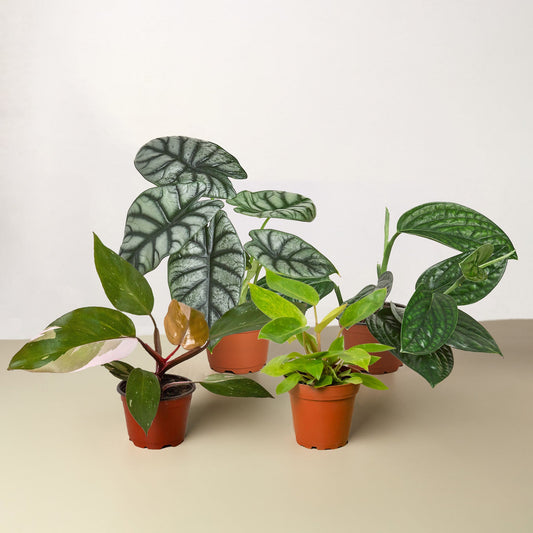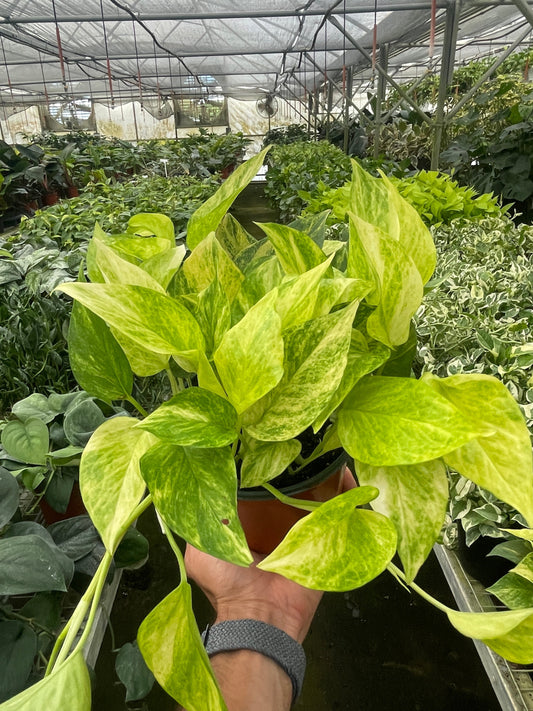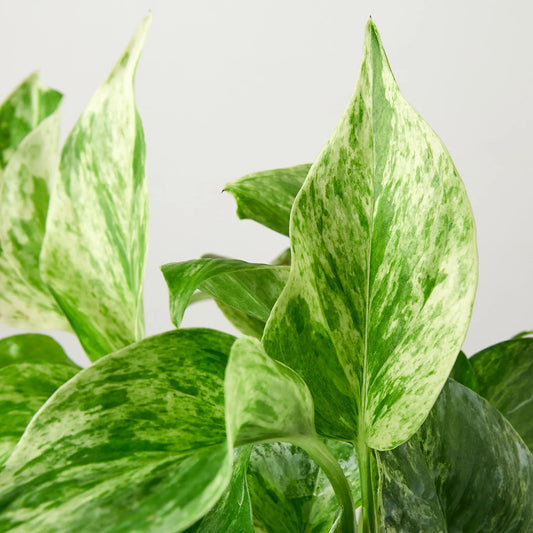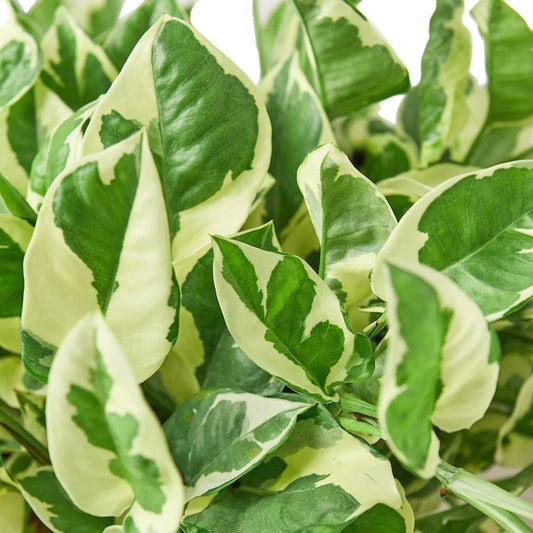Philodendron Gloriosum Aerial Roots: Everything You Need to Know
Cafe Planta Team
Philodendron Gloriosum is a showstopper in the plant world, boasting large, velvety leaves that can make any room look like a tropical paradise. But it's not just the leaves that deserve the spotlight. The plant's aerial roots also play a crucial role in its growth and health. If you've ever wondered about those intriguing roots that seem to grow out of nowhere, you're in the right place.
In this article, we'll uncover everything you need to know about Philodendron Gloriosum's aerial roots. From their purpose and care to how they can influence your plant's overall well-being, get ready to dive into the fascinating details. Whether you're a seasoned plant parent or just starting your green journey, there's something here for everyone.
What Are Aerial Roots?
Aerial roots are just what they sound like—roots that grow above the soil. Unlike the typical roots that we think of, which burrow deep into the earth to find nutrients and water, aerial roots stretch out into the air. These roots can look a bit like tentacles, reaching out and exploring their surroundings.
In the case of Philodendron Gloriosum, these roots are quite common. They originate from the stems and grow in search of moisture and support. If you've ever seen your plant's roots reaching toward a nearby wall or even dangling in the air, that's perfectly normal. It's a natural adaptation that allows the plant to thrive in its native habitat, where it might be climbing trees or sprawling across the ground.
So, why do these roots grow? Well, it's mostly about survival. In their natural environments, Philodendrons often grow in forests where the competition for sunlight and nutrients is fierce. Aerial roots help them anchor onto surfaces, climb toward the light, and even absorb moisture from the humid air. This clever adaptation ensures they get what they need to survive and flourish.
How Do Aerial Roots Benefit Your Philodendron Gloriosum?
At first glance, you might think aerial roots are just there for show, but they actually bring several benefits to your Philodendron Gloriosum. Let's break down how these roots can be a powerhouse for your plant's health.
- Stability: In their natural habitat, Philodendrons use aerial roots to anchor themselves to trees or other structures. In a home setting, these roots can help stabilize the plant, especially if it's growing in a container. They can grab onto supports like trellises, providing extra security.
- Nutrient Absorption: While the main roots in the soil do the heavy lifting in terms of nutrient absorption, aerial roots can also take in moisture and nutrients from the air. This is especially useful in humid environments where the plant can benefit from additional hydration.
- Propagation: Aerial roots can be an asset if you're looking to propagate your Philodendron. They make it easier to take cuttings that already have a root system, increasing the chances of successful propagation.
It's clear that these roots are more than just an interesting feature. They play a vital role in your plant's health and can make a big difference in how well it grows and adapts to its environment.
Do You Need to Trim Aerial Roots?
The short answer is: not necessarily. Aerial roots are a natural part of your Philodendron Gloriosum's growth, and they don't need to be trimmed unless they're becoming a problem. However, you might choose to trim them for aesthetic reasons or if they're getting in the way.
If you do decide to trim them, here's how to do it safely:
- Use clean, sharp scissors or pruning shears. This minimizes the risk of introducing bacteria or fungi to the plant.
- Cut the roots close to the stem but avoid cutting into the stem itself. This can damage the plant and open it up to infections.
- Trim only the roots that are necessary. There's no need to go overboard, as these roots do serve a purpose.
Remember, trimming aerial roots won't harm your plant as long as you do it carefully. However, it's usually best to let them do their thing unless there's a compelling reason to intervene.
How to Care for Aerial Roots
Just like the rest of your plant, aerial roots need a bit of attention to stay healthy. Here are some tips on how to care for them:
- Humidity: Aerial roots thrive in humid environments. If your home is on the dry side, consider misting your plant or using a humidifier to provide the necessary moisture. This can prevent the roots from drying out and becoming brittle.
- Support: If the roots are reaching out for something to grab onto, provide a support structure like a moss pole or trellis. This can help guide the plant's growth and prevent the roots from becoming tangled.
- Cleansing: Occasionally, wipe down the aerial roots with a damp cloth. This removes dust and other particles that might hinder their ability to absorb moisture.
With a bit of care, your Philodendron Gloriosum's aerial roots can remain healthy and contribute to the overall well-being of your plant.
Common Issues with Aerial Roots
While aerial roots are generally low-maintenance, they can sometimes encounter issues. Here are a few common problems and how to address them:
- Dry and Brittle Roots: If you notice that your aerial roots are dry and brittle, it's likely due to low humidity. Try increasing the humidity around your plant by misting or using a pebble tray with water underneath the pot.
- Discoloration: Yellow or brown aerial roots might indicate a nutrient deficiency or overexposure to sunlight. Ensure your plant is getting the right balance of light and nutrients, and adjust its position if needed.
- Root Rot: While less common in aerial roots, rot can occur if they're constantly wet. Make sure the area where the roots are growing is well-ventilated and that you're not overwatering the plant.
Being observant can go a long way in preventing and resolving these issues. Keep an eye on your plant and take action as needed to maintain its health.
How to Use Aerial Roots for Propagation
If you're interested in multiplying your Philodendron collection, aerial roots can make propagation easier. Here's a simple method to get you started:
- Choose a healthy stem with at least one aerial root. This increases the likelihood of successful propagation.
- Cut the stem below the aerial root using a clean, sharp knife or scissors.
- Place the cutting in a glass of water, making sure the aerial root is submerged. This will encourage root growth.
- Change the water regularly to prevent stagnation and bacteria buildup.
- Once the new roots are a couple of inches long, plant the cutting in soil. Keep it well-watered and in a humid environment until it establishes.
This method takes advantage of the plant's natural tendencies and can yield great results with a bit of patience and care.
Integrating Aerial Roots into Your Home Decor
Aerial roots can add an exotic touch to your home decor. Here are some creative ways to feature them:
- Hanging Displays: Use macramé hangers to display your Philodendron Gloriosum, allowing the aerial roots to dangle freely. This creates a unique visual effect and adds a touch of bohemian flair to your space.
- Trailing on Shelves: Let the aerial roots cascade over the edge of a shelf or ledge. This can soften the look of a room and add an organic element to your interior design.
- Wall Climbing: Encourage the aerial roots to climb a wall-mounted trellis. This can create a living wall effect that's both stunning and functional.
With a bit of imagination, you can incorporate these roots into your decor, creating a dynamic and living space that reflects your love for plants.
Caring for Philodendron Gloriosum: Beyond Aerial Roots
While aerial roots are fascinating, they're just one part of caring for your Philodendron Gloriosum. Here's a quick overview of other care tips to keep your plant thriving:
- Light: Philodendron Gloriosum prefers bright, indirect light. Too much direct sunlight can scorch the leaves, while too little light can slow growth.
- Watering: Keep the soil consistently moist but not soggy. Allow the top inch of soil to dry out between waterings to prevent root rot.
- Soil: Use a well-draining potting mix rich in organic matter. This provides the nutrients your plant needs and helps prevent waterlogging.
- Temperature and Humidity: This plant thrives in temperatures between 65-80°F (18-27°C) and appreciates high humidity levels. If your home is dry, consider using a humidifier or placing the plant in a more humid room like a bathroom.
By understanding and meeting these basic needs, you can ensure your Philodendron Gloriosum grows beautifully and healthily.
Final Thoughts
Philodendron Gloriosum's aerial roots are more than just a quirky feature—they're an important part of the plant's overall health and growth strategy. By understanding their role and how to care for them, you can help your plant thrive in your home. From providing stability to facilitating propagation, these roots are a testament to the plant's adaptability and resilience.
At Cafe Planta, we love sharing our plant passion with you. Whether you're looking for beautiful houseplants, plant care accessories, or even stylish plant-themed apparel, we've got you covered. If you have questions about your plant care journey, don't hesitate to email us or reach out on Instagram. We're excited to help you create a thriving plant collection and connect with the natural world.



















